Mounting methods
One of the classifications is based on the mounting method.
- Mini-cornice. The curtain is attached directly to the window frame. This type of mounting saves space and is especially often used in small apartments, as well as in apartments decorated in a minimalist style. With this type of fastening, the window sill is not covered by a curtain, but remains free and can be used as a desk, bench, shelf for books, flowers or in any other way.
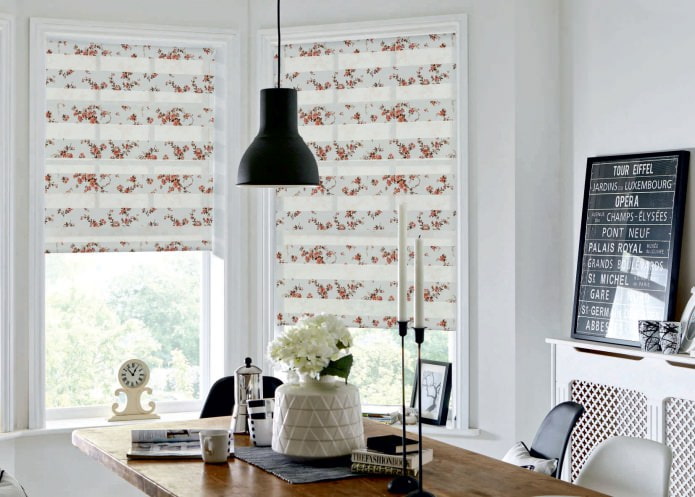
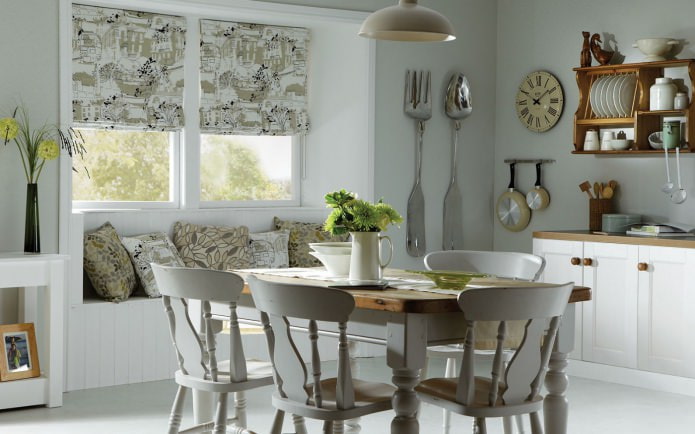
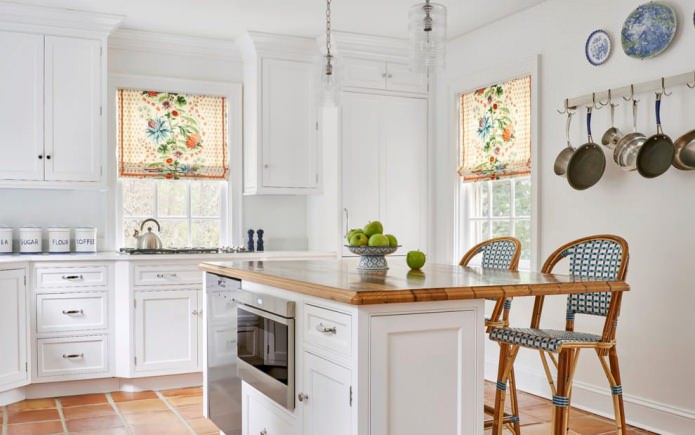
- Classic mounting option. Large curtains (standard size 1.5 x 1.8 meters) are mounted on such a cornice. They are mounted on the wall above the window. When lowered, the curtain adjoins the wall and takes up less space in the room than a traditional curtain.
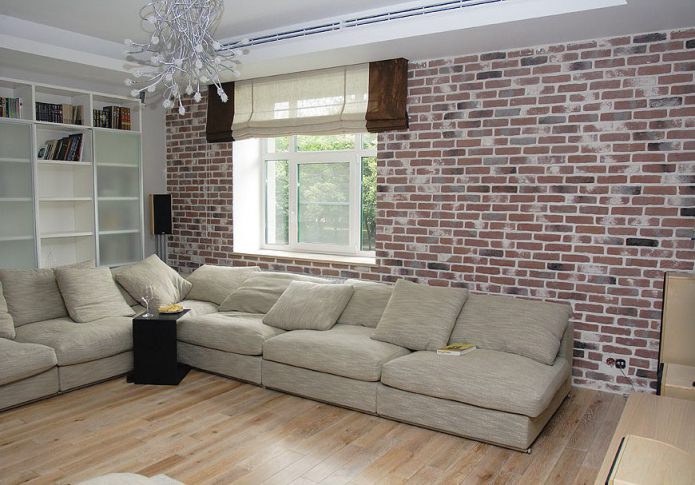
- Complex. For dormer or arched windows, a special design with a beveled or curved cornice has been developed. For this type of windows, using Roman blinds is an excellent decoration solution.
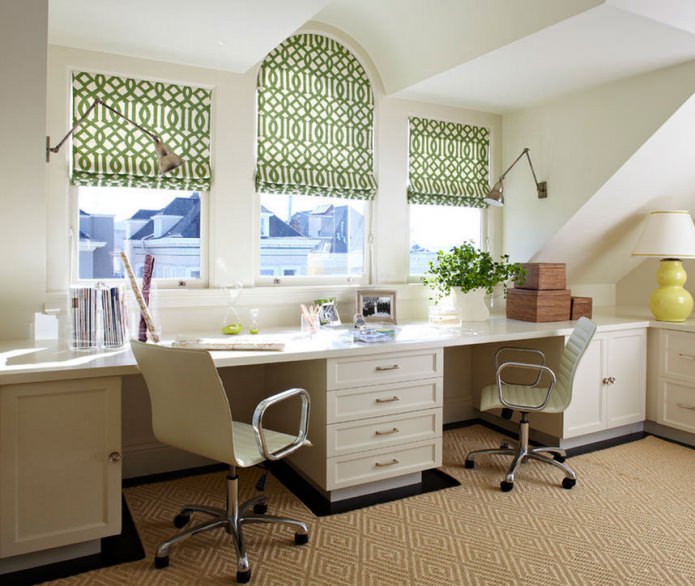

Look at other options for attaching curtains to the cornice.
Types of mechanisms
Another classification is based on the differences in the action of the mechanism that allows you to lower and raise the product. In accordance with this, curtain rods are divided into:
- variant with a manual lifting mechanism,
- variant with an electric lifting mechanism.
Usually, curtains with a cord lift are attached this way.
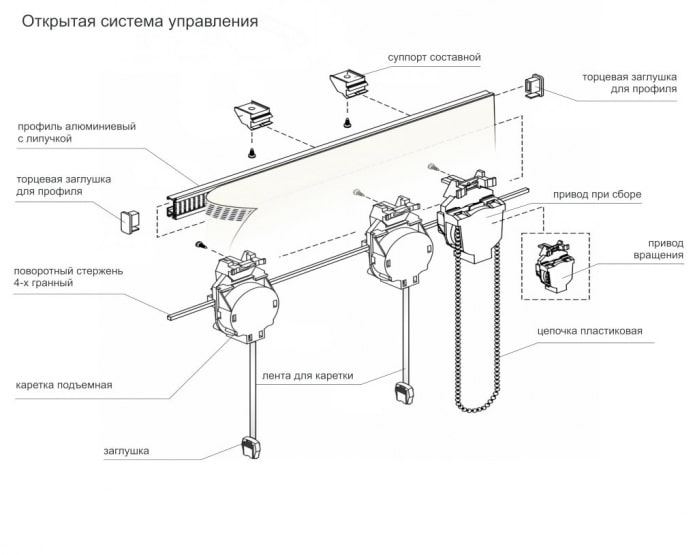
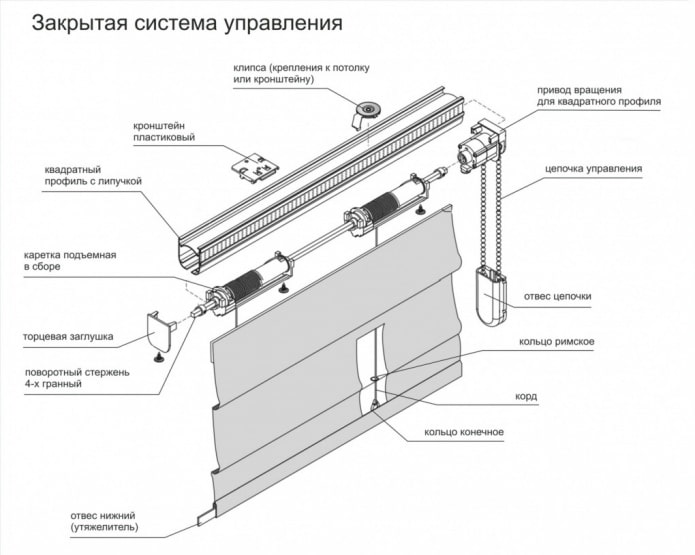
In the photo on the left is an open control system, in the photo on the right – closed.
When decorating a window with a Roman blind, you need to imagine how convenient it will be to use it. And to assess this convenience, a classification based on the specific details of the lifting mechanism is suitable. According to it, the mechanisms are divided into the following types:
- Rope, also known as cord lifting mechanism. This is the most practical and economical type. It is used in cases where the fabric from which the curtain is made is not too heavy. Very dense and heavy materials can disable the mechanism.
- The chain-rotor mechanism is based on rotating blocks and a dense cord, the structure is set in motion by moving the chain. This allows you to stop the mechanism in any position, accordingly, the curtain can be fixed at any height, which is very convenient.
- An automatic control system is the most convenient, but at the same time the least budgetary type. By pressing a button on the remote control, you can open or close the curtain without getting up from your seat.
Design
Roman blinds have many advantages over regular ones, but only if you have chosen the mechanism wisely according to your needs. And to make the right choice, you need to have a good idea of how this mechanism works and what parts it consists of.
Any curtain rod, regardless of the type of lifting mechanism, contains:
- a profile (usually made of metal),
- a plumb line for the curtain,
- a lifting mechanism,
- a pulling mechanism,
- additional elements (hooks, chains, Velcro – depending on what kind of pulling and lifting mechanisms are used).
Various versions of Roman blinds can be additionally equipped with the following systems:
- An open lift with a chain mechanism that ensures tight winding of the curtain fabric on the shaft, fixation occurs with the help of hooks on the sides and plastic hooks, which are included in the kit.
- A spring mechanism for lifting canvases with open or closed guides, used for inclined windows, for example, in attics.
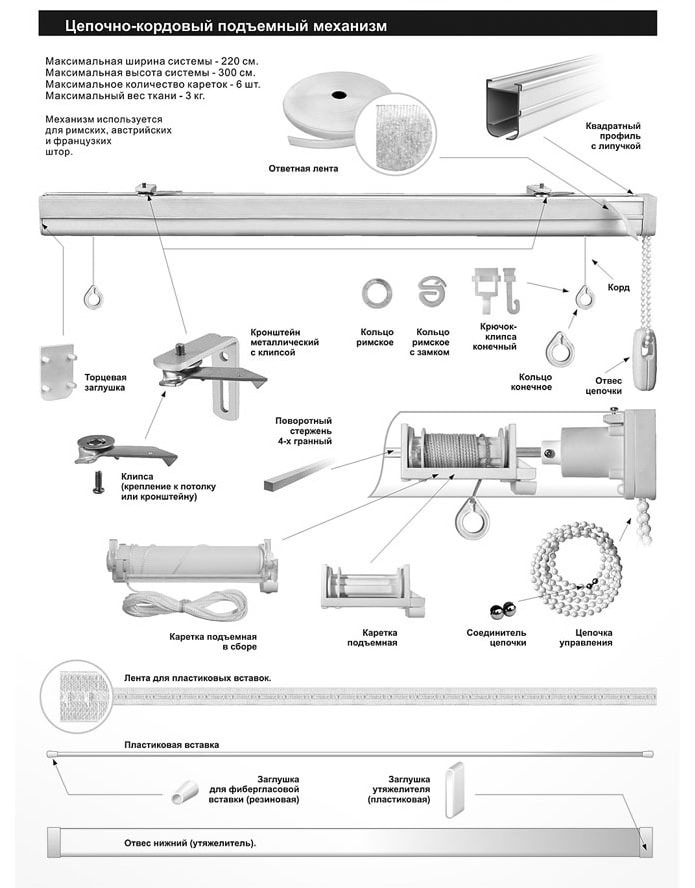
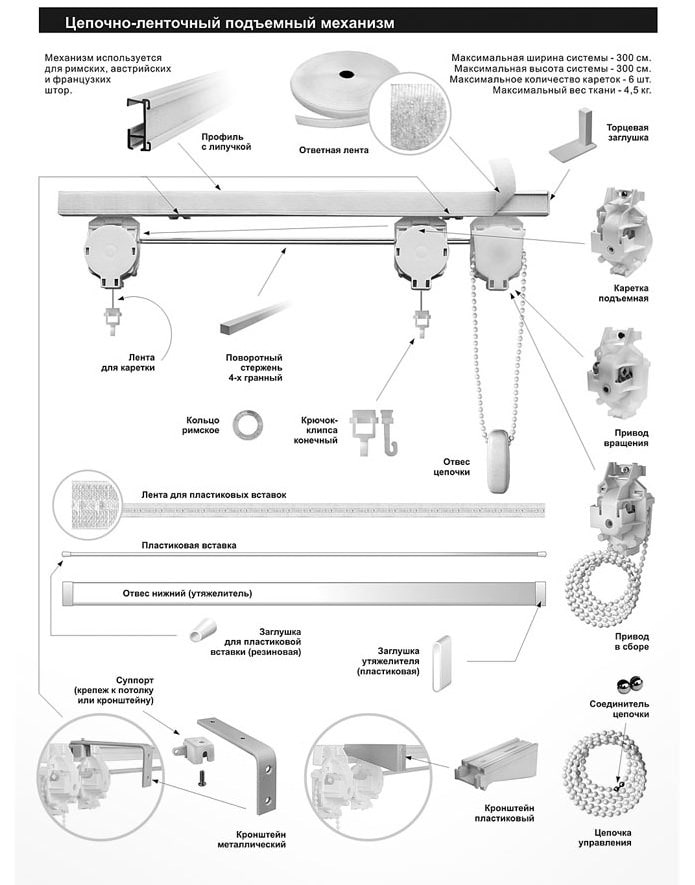
The photo on the left shows the design of a chain-cord lifting mechanism, the photo on the right shows the design of a chain-belt mechanism.
Recommendations for selection
Due to the fact that the design of the Roman blind is seriously different from the usual version, it is necessary to take these differences into account when choosing fabrics for the curtain panel, its width and height.
- It is not recommended to use curtains more than two and a half meters wide, since the mechanism of such a length will not withstand constant loads and will quickly break.
- Too long a panel will be very heavy even if fairly light fabrics are used, therefore, in double-height halls of private houses, one curtain rod should not be used for two window openings – the length of the curtain cannot be more than 4.5 m!
- Very dense and heavy fabrics should be used only if the curtain rod has the necessary strength and reliability.
When decorating a window with a Roman blind, the main task is the correct choice of curtain rod, and it should be selected depending on what kind of panel will be used. Its strength must be such that it can withstand the weight of the lifting mechanism and the curtain, and still have some safety margin. Strength can be increased by using an additional attachment point installed in the middle of its length. This will distribute the load evenly and reduce sagging.
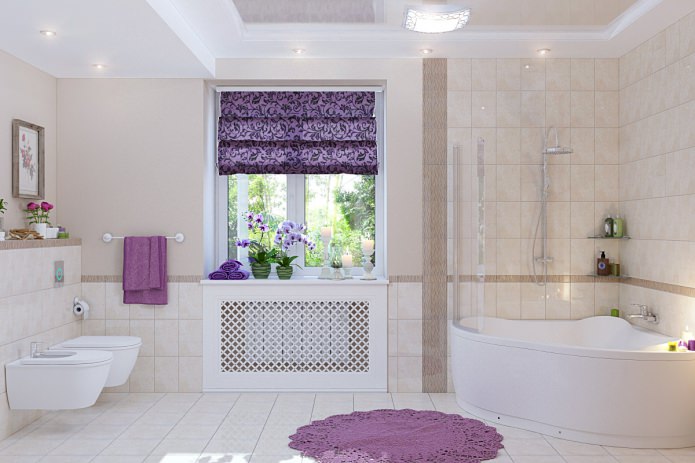
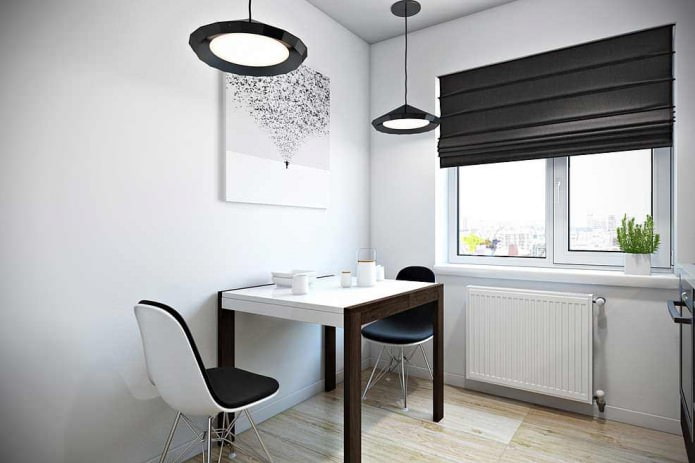
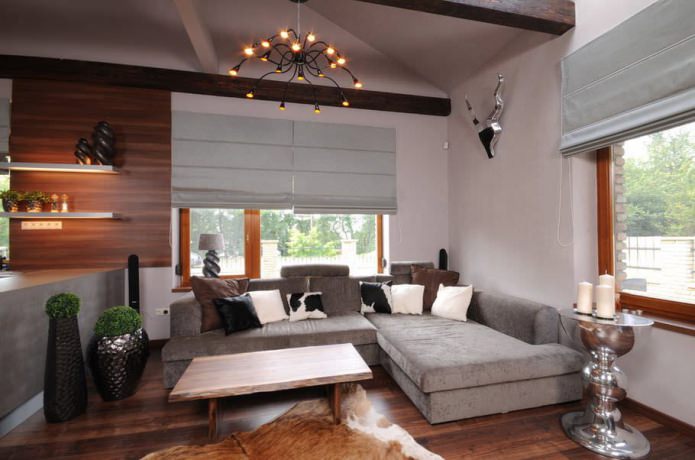
Advantages
Let’s consider the main differences between Roman blinds and regular curtains to understand why they have become so popular.
- The curtain can be mounted almost anywhere, even very narrow. They are suitable for decorating any type of window – non-standard openings of any geometry, convenient for bay windows, and there is simply no alternative for dormer windows.
- Roman blinds in the interior will not only help to create a unique atmosphere, they are also able to provide complete light masking if you decide to arrange a home theater in the room, reliably protect the bedroom from the morning sun rays, and at the same time do not interfere with the access of daylight if you raise them completely.
- The canvas can be made of any type of fabric: organza, cotton, silk, wool, velvet, tapestry, velor. Synthetic fabrics and even film products are also used.
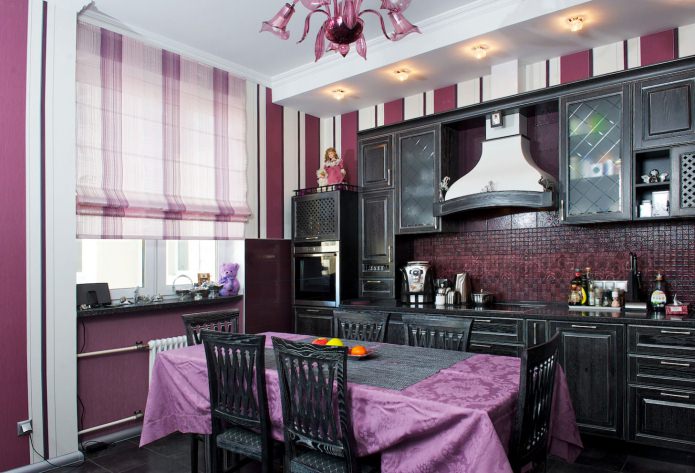
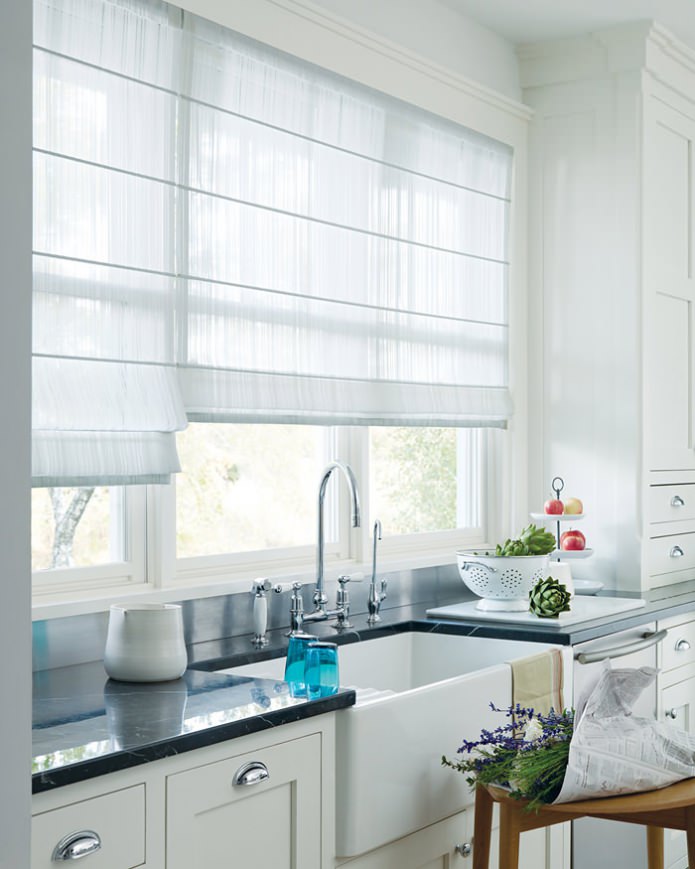
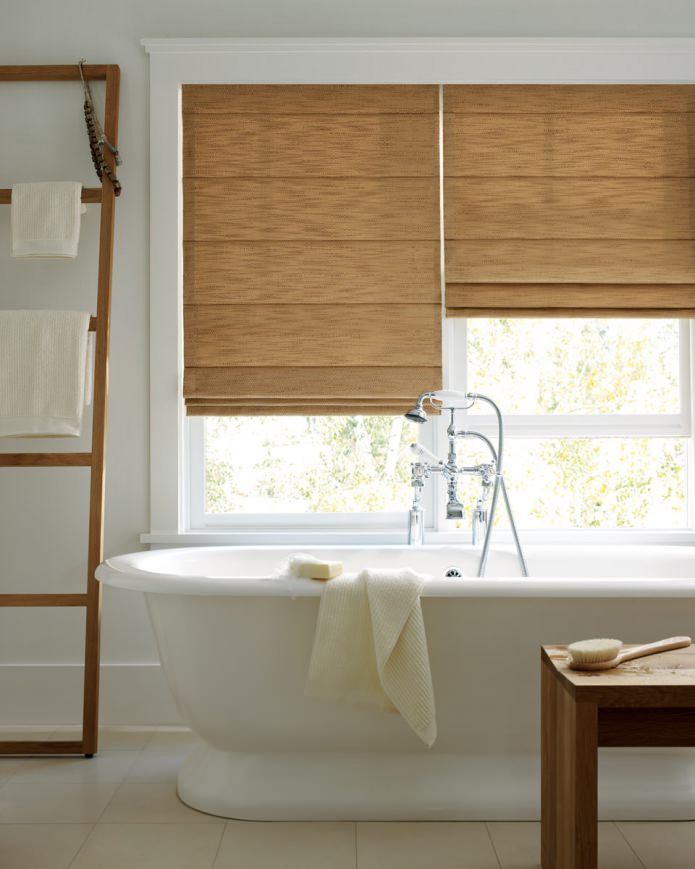
Where are Roman blinds attached?
The task is standard – to protect the room from ultraviolet radiation and privacy from ill-wishers. But if we are talking about Roman blinds, it can be realized by hanging them:
- On the window sash. In this case, when the window is opened, the entire window opening that this sash covered swings open.
- On the window frame. This means that you won’t be able to open the sash unless you fold the Roman blind.
- On the wall. In this case, a cornice is required. The entire opening is closed, including the slopes and window sill.
- To the ceiling. Roman blinds turn into a decorative element attached to the ceiling, and which can be lowered to the floor.
Each type of fastening has a number of features. There is nothing complicated, but basic knowledge and construction skills are required.
Instructions for proper installation
Whichever method is chosen, the main thing is to correctly and evenly mark the fastening locations so that the Roman blinds hang vertically, perpendicular to the ceiling and floor. There is no clear answer to the question of how Roman blinds are attached. The technology depends on the chosen method.
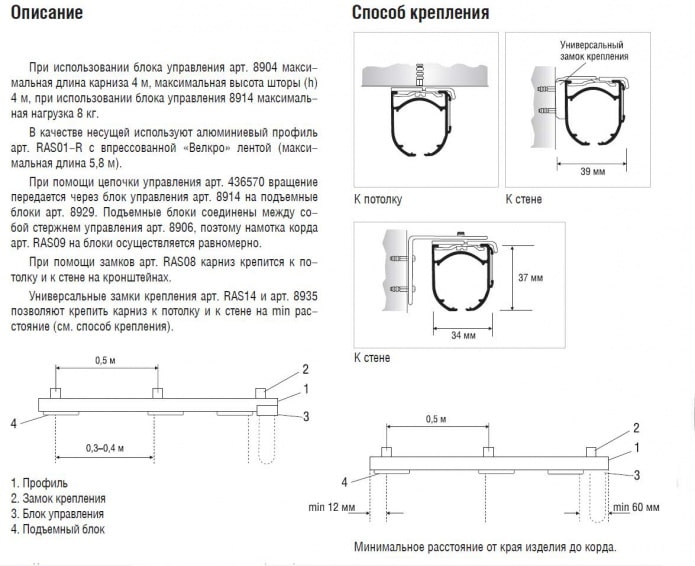
The photo shows a diagram of how to fasten the product to the ceiling or wall.
How to fasten with screws?
The technology involves screwing the structure directly to the ceiling or wall with screws. The curtains are fastened in accordance with the step-by-step instructions:
- The guide is applied to the surface, and marks are made at the places where the fasteners are installed.
- Holes are drilled according to the markings. Their diameter should not be larger than the diameter of the screw thread.
- The screws are screwed into the mounting sockets. In this case, someone needs to hold the curtain along the marking.
Installation instructions are also included. After completing the procedure, you need to check the lifting mechanism.
How to hang on mounting brackets?
In this case, the algorithm of actions looks like this:
- The level determines the horizontal, on which the places for drilling are measured using a tape measure. To maintain the correctness of the geometric shapes, the strip is drawn parallel to the window sill. The points for the holes are marked with a pencil, pen or marker.
- Hole holes for screws are drilled with a drill with a drill bit. A feature of concrete structures is the use of a hammer drill and a drill with a carbide tip. It is important not to hit the reinforcement. Brick, wood and other less durable materials are drilled with a regular tool.
- Self-tapping screws, which come with the Roman blinds, are screwed into the plastic dowels inserted into the holes and are attached using special brackets.
If you do not want or have the opportunity to chisel the wall or make holes in it, you can refuse this technology and use other methods.
Mounting options without drilling
Special brackets are available for sale that allow you to attach Roman blinds directly to the window sash. And some models of Roman blinds come with special Velcro.
Installation using universal fasteners for opening sashes
In this case, they are attached as follows:
- Marking is applied (on the sash and the curtain guide).
- Universal fasteners are installed.
- Magnets are attached to the curtain guide with glue.
- The entire structure is suspended on magnets.
The advantages of this method are ease of dismantling for cleaning the curtains from dust and washing the windows. The disadvantage is the impossibility of installing heavy, massive curtains.
An alternative to this method is to use a construction stapler. In this case, the curtains are shot with staples directly to the sash. But they are only attached to wooden structures in this way. A construction stapler will not pierce metal-plastic.
How to hang a curtain with Velcro?
For this, you also need to pre-mark the attachment points. After that, the step-by-step procedure looks like this:
- One strip of Velcro, cut to the size of the curtains, is attached to the surface of the wall, ceiling, frame or sash using a construction stapler.
- Another strip of textile Velcro is sewn to the Roman blinds. The main thing is that the strips match. You can do this across the entire width of the strip.
- The curtains are attached by pressing the two Velcro components.
The advantages of the method are the same – easy installation and dismantling during a major cleaning of the room.
Video step-by-step instructions
For convenience and clarity, a video was shot, which describes in detail all the methods and ways of fastening. It also talks about the features and moments that require attention and accuracy.
How to assemble a Roman blind?
In any case, already assembled Roman blinds are attached. This means that before starting the fastening work, you need to do the following:
- The planks are installed, including the lower weight one.
- The rings are sewn in the places where the planks are installed.
- Guide rings are attached to the kenriz plank above each row of rings.
- The threads are threaded through the rings and gathered into one rope.
At the end, a stopper knot is tied or a carabiner is installed. This is to prevent the rope from slipping out. The work should be done on a horizontal surface, as if the Roman blinds were already installed, so that the threads have the required length.
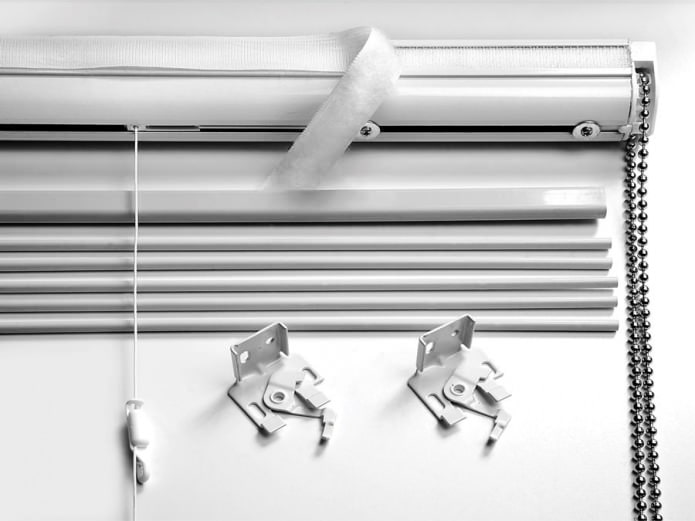
Roman curtain rods are most often used to decorate a window in cases where it is impossible to hang regular curtains. In this case, the curtain rod is attached directly to the window opening along its outer side.
It is best to attach the curtain rod to the frame using special “Velcro” fasteners, in which case you will not need additional tools and materials. Thus, we see that Roman curtain rods are the most versatile option for decorating any type of window in any interior. They can not only decorate a room, but also increase the functionality of the windows and the space around them.
Now reading:
- items for an apartment from Svetofor that you should avoid buying
- How to effectively wash dishes? – key tips and tricks for all types.
- Apartment design 36 sq. m: more than 60 photos, layout options for studios and 1-2 rooms.
- Modern design of a one-room apartment: 13 ideas and 50 photos.
- affordable ways to fence your garden beds and improve the appearance of your garden.